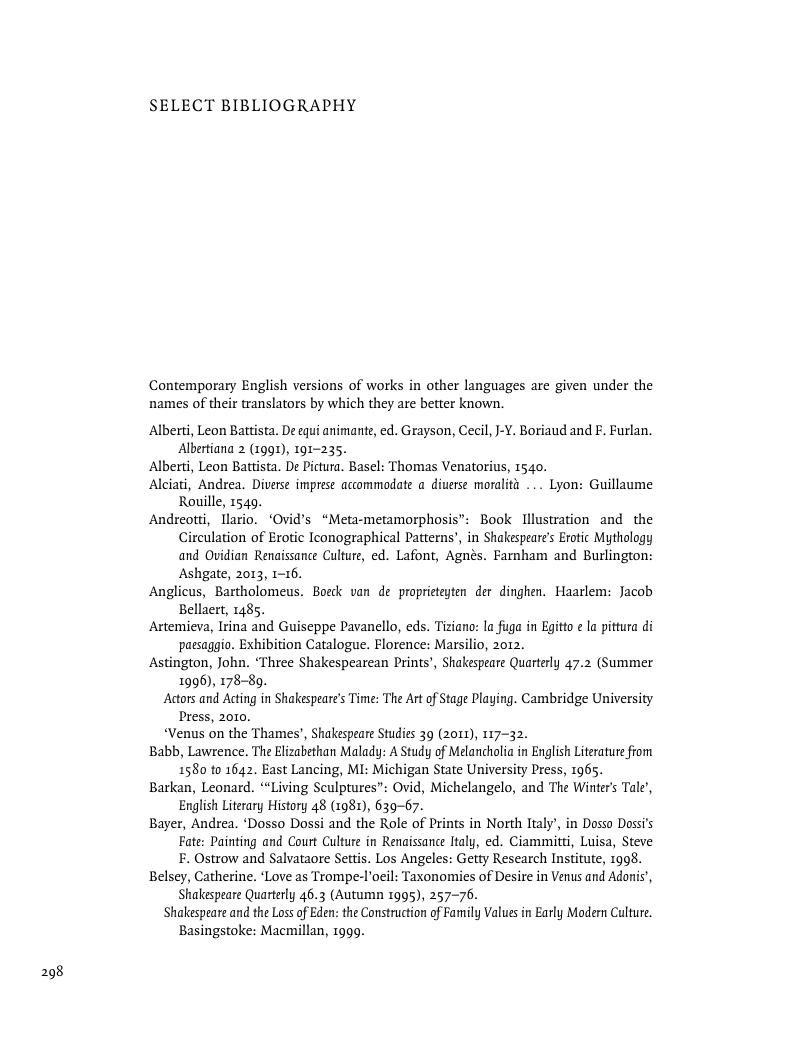Book contents
- Shakespeare and the Visual Imagination
- Frontispiece
- Shakespeare and the Visual Imagination
- Copyright page
- Dedication
- Contents
- Colour plates
- Illustrations
- Book part
- Chapter 1 Likeness, Device, Composition: Shakespeare’s Visual Surroundings
- Chapter 2 Allusion and Idea inthe Taming of the Shrew
- Chapter 3 Visual Exchange in the Poems
- Chapter 4 Love’s Labour’s Lostand Visual Composition
- Chapter 5 Richard IIand the Politics of Perspective
- Chapter 6 Visual Identities ina Midsummer Night’s Dream
- Chapter 7 Emblem, Tradition and Invention
- Chapter 8 Imagination Beyond Image: Ethopoeia and Metatheatre
- Chapter 9 Defining the Visual in Shakespeare
- Notes
- Select Bibliography
- Index
- References
Select Bibliography
Published online by Cambridge University Press: 05 August 2015
- Shakespeare and the Visual Imagination
- Frontispiece
- Shakespeare and the Visual Imagination
- Copyright page
- Dedication
- Contents
- Colour plates
- Illustrations
- Book part
- Chapter 1 Likeness, Device, Composition: Shakespeare’s Visual Surroundings
- Chapter 2 Allusion and Idea inthe Taming of the Shrew
- Chapter 3 Visual Exchange in the Poems
- Chapter 4 Love’s Labour’s Lostand Visual Composition
- Chapter 5 Richard IIand the Politics of Perspective
- Chapter 6 Visual Identities ina Midsummer Night’s Dream
- Chapter 7 Emblem, Tradition and Invention
- Chapter 8 Imagination Beyond Image: Ethopoeia and Metatheatre
- Chapter 9 Defining the Visual in Shakespeare
- Notes
- Select Bibliography
- Index
- References
Summary

- Type
- Chapter
- Information
- Shakespeare and the Visual Imagination , pp. 298 - 306Publisher: Cambridge University PressPrint publication year: 2015



